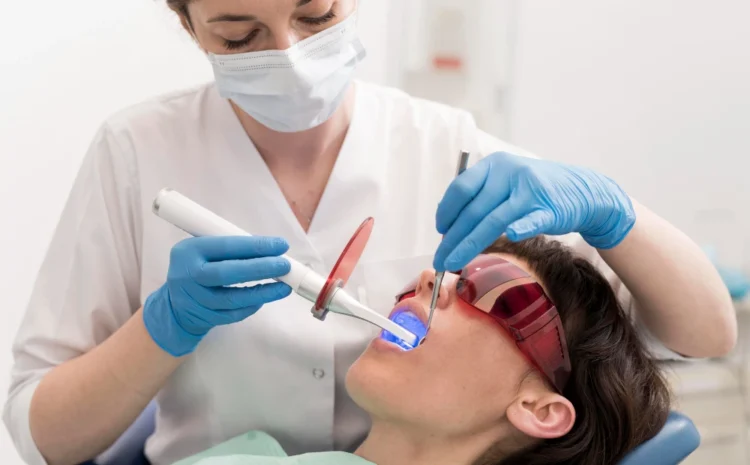
Is a Dental Bridge Permanent? How Long Does It Really Last?
When you lose one or more teeth, restoring your smile becomes more than just a cosmetic concern it’s about maintaining proper chewing, speaking, and jaw alignment. Among the available tooth replacement options, dental bridges are a common, reliable choice. But one of the most frequent questions patients ask is: “Is a dental bridge permanent?”
Let’s explore in depth what dental bridges are, how long they last, what factors influence their lifespan, and how they compare to other restorative options like dental implants.
What Is a Dental Bridge?
A dental bridge is a fixed prosthetic device that replaces one or more missing teeth by “bridging” the gap between adjacent natural teeth or dental implants.
It is composed of:
- Pontic (artificial tooth) – replaces the missing tooth.
- Abutment teeth – natural teeth on either side of the gap that serve as anchors.
- Crowns – placed over the abutment teeth to hold the bridge in place.
How It Works
The bridge is cemented permanently to the abutment teeth. Unlike removable dentures, you cannot remove a dental bridge at home, which is why it’s often referred to as a fixed or permanent prosthesis.
Is a Dental Bridge Permanent?
While dental bridges are considered a permanent restoration, they are not lifelong. This means that the bridge is fixed in place and cannot be removed without a dentist’s help, but it may eventually need replacement due to natural wear, gum recession, or damage to the supporting teeth.
In other words, a dental bridge is semi-permanent designed to last for many years but not forever.
How Long Does a Dental Bridge Last?
On average, a dental bridge typically lasts between 10 to 18 years with proper care and maintenance.
However, several important factors determine its longevity.
Factors That Affect the Longevity of a Dental Bridge
Dr. Ganesh Bhandari explains that the lifespan of a dental bridge depends on multiple clinical and patient-related factors. Let’s explore each one in detail:
1. Condition of Adjacent Teeth
Since a dental bridge relies on the neighboring teeth as anchors, their health directly impacts the durability of the bridge.
- If these teeth are strong and have adequate enamel structural support, the bridge is likely to last longer.
- If they have large fillings, decay, or weakened roots, the bridge may fail prematurely.
Dentists often recommend root canal treatment and crown strengthening for weak abutment teeth before placing a bridge.
2. Bone Support
Healthy jawbone structure is crucial for stability. The bone around your abutment teeth must be dense and strong enough to withstand the biting pressure transmitted through the bridge.
- Patients with bone loss due to gum disease or missing teeth may experience reduced bridge longevity.
- Proper oral hygiene and timely gum treatment help maintain bone health and, in turn, the bridge’s support.
3. Length of the Bridge
The longer the bridge, the more stress it endures.
For instance:
- A three-unit bridge (replacing one missing tooth) is more stable than a five-unit bridge (replacing two or more teeth).
- Longer bridges place more pressure on the abutment teeth, increasing the risk of damage or loosening over time.
Dentists carefully plan the length and design to distribute bite forces evenly.
4. Patient’s Bite Force
Your biting and chewing force significantly affect the bridge’s lifespan.
- Individuals with strong bite forces or habits like teeth grinding (bruxism) can cause wear, fractures, or loosening of the bridge.
- Using a night guard and avoiding hard foods (like ice, nuts, or bones) helps preserve bridge integrity.
5. Patient Compliance
A dental bridge’s success also depends heavily on how well patients follow their dentist’s post-treatment instructions.
Compliance includes:
- Maintaining excellent oral hygiene (brushing and flossing daily).
- Visiting the dentist regularly for check-ups and professional cleaning.
- Avoiding sticky or hard foods that could damage the bridge.
- Using interdental brushes or threaders floss to clean under the bridge.
Patients who are consistent with oral care tend to have bridges that last significantly longer.
6. Material of the Bridge
The material used plays a vital role in durability, appearance, and cost.
Material Type | Description | Average Lifespan | Aesthetic Appearance |
Porcelain-fused-to-metal (PFM) | Durable metal base with a tooth-colored porcelain coating. | 10–15 years | Natural, but may show a metal edge over time |
All-ceramic or zirconia | Highly aesthetic, metal-free, and biocompatible. | 12–18 years | Excellent, ideal for front teeth |
Metal bridges (gold or alloys) | Very strong but less aesthetic. | 15–20 years | Poor aesthetics, mostly for molars |
Dr. Ganesh Bhandari recommends choosing the bridge material based on the tooth’s position, patient preference, and bite requirements.
Dental Bridge vs. Dental Implant: Which Lasts Longer?
A common comparison patients make is between dental bridges and dental implants.
Here’s a quick look at how they differ:
Feature | Dental Bridge | Dental Implant |
Longevity | 10–18 years | 20+ years (often lifelong) |
Support | Adjacent teeth | Jawbone |
Bone Preservation | Does not prevent bone loss | Prevents bone resorption |
Maintenance | Requires special cleaning | Easy to clean like natural teeth |
Procedure Time | 2–3 visits | 3–6 months (includes healing) |
Suitability | Good for patients not suitable for surgery or with weak bone | Ideal for those with healthy bone and gums |
While dental implants generally last longer, bridges are an excellent alternative for patients who cannot undergo implant surgery or prefer a faster, less invasive option.
How to Make Your Dental Bridge Last Longer
You can significantly extend the life of your dental bridge by following these simple yet effective care tips:
1. Maintain Excellent Oral Hygiene
- Brush twice a day using a soft-bristled toothbrush and fluoride toothpaste.
- Floss daily using threaders floss or super floss to clean under the bridge.
- Use an antimicrobial mouthwash to reduce plaque buildup.
2. Schedule Regular Dental Check-Ups
Visit your dentist every six months for a thorough cleaning and examination. Regular professional care helps detect early signs of wear, gum issues, or decay.
3. Avoid Damaging Habits
- Don’t bite nails, chew ice, or use your teeth as tools.
- Limit hard and sticky foods that could damage your bridge.
- If you grind your teeth, wear a custom night guard.
4. Follow Your Dentist’s Instructions
Compliance with dental advice from hygiene practices to dietary precautions — is key to maintaining bridge health.
5. Eat a Balanced Diet
A diet rich in calcium, vitamin D, and phosphorus supports bone and tooth health, indirectly improving the lifespan of your dental bridge.
When Should You Replace a Dental Bridge?
Even with good care, dental bridges may eventually need replacement.
Common signs include:
- Loose or unstable bridge
- Pain or sensitivity in abutment teeth
- Gum inflammation or bleeding around the bridge
- Visible cracks or chips in the bridge material
- Food getting trapped underneath
If you experience any of these symptoms, consult your dentist promptly for evaluation and possible repair or replacement.
Advantages of Dental Bridges
- Quick Restoration: Usually completed in 2–3 visits.
- Affordable: Less expensive than implants.
- Functional & Aesthetic: Restores chewing efficiency and natural smile.
- Custom Fit: Tailored to match the color and shape of your natural teeth.
- Non-Surgical: No bone grafting or surgical procedure required.
Disadvantages of Dental Bridges
- May require shaving down healthy teeth for support.
- Does not prevent bone loss in the missing tooth area.
- Can fail if abutment teeth become decayed or weak.
- Shorter lifespan compared to implants.
Key Takeaways: Is a Dental Bridge Permanent?
Question | Answer |
Is a dental bridge permanent? | Yes, it is fixed and non-removable by the patient, but not lifelong. |
How long does it last? | Usually 10–18 years, depending on care and conditions. |
What affects its longevity? | Adjacent teeth health, bone support, bridge length, bite force, patient compliance, and bridge material. |
Can it be replaced? | Yes, when wear or decay occurs, your dentist can replace it. |
Is it better than an implant? | Both have advantages — implants last longer, but bridges are quicker and non-surgical. |
Conclusion
So, is a dental bridge permanent?
A dental bridge is a fixed and long-lasting tooth replacement option, typically serving patients well for 10 to 18 years or even longer with good care. Its longevity depends on several factors, including the health of surrounding teeth, bone structure, bite force, material quality, and patient compliance.
While it may not last as long as a dental implant, a well-designed dental bridge by an experienced dentist like Dr. Ganesh Bhandari offers an effective, aesthetic, and functional solution, especially for patients who cannot opt for implants.
With proper oral hygiene, regular dental visits, and mindful habits, your dental bridge can keep your smile healthy, confident, and complete for many years.



